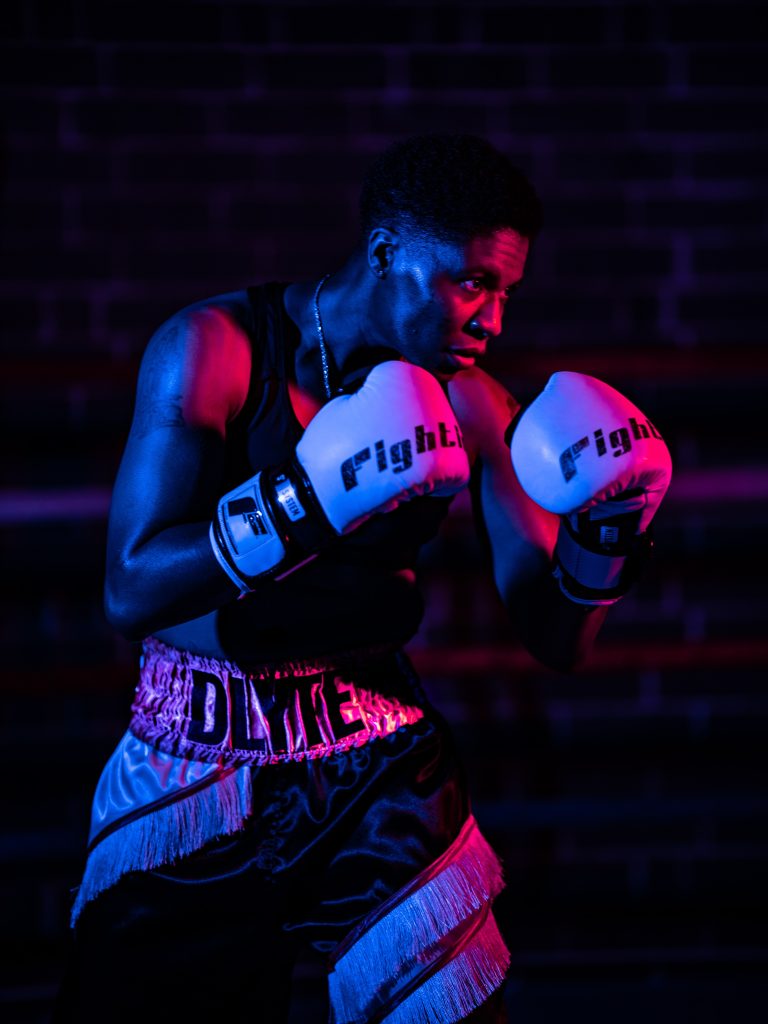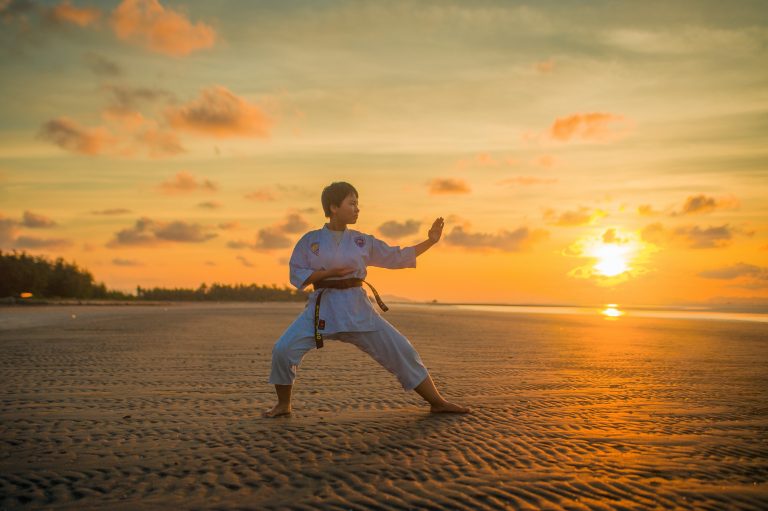The 10 Best Karate Techniques For Strong Defense
Karate is a martial art that emphasizes defense and is known for its powerful strikes and kicks. It offers a range of techniques designed to protect oneself in combat situations. While there are dozens of different karate techniques, some are more effective than others for defense. Here are the top 10 best karate techniques for strong defense.
1. Gedan-Barai (Downward Block)
The Gedan-Barai is an essential technique in karate. Used to block low strikes such as kicks thrown at the legs, it can also be used to sweep the opponent off his feet. To execute this technique, begin with your hands up in a guard position and step forward with one foot while simultaneously sweeping the arm down to block the incoming attack.
2. Oi-Zuki (Forward Punch)
The Oi-Zuki is one of the most basic but effective techniques in karate. This punch is thrown straight ahead, targeting the opponent’s face or body. To execute this technique, step forward with your leading foot while punching with your back hand. This technique can generate a lot of power when properly executed.
3. Mae-Geri (Front Kick)
The Mae-Geri is a front kick executed while stepping forward. It is used to create distance between the attacker and defender or to strike the opponent in the abdomen, face or legs. To execute this technique, step forward with your front foot and then lift your back leg to execute the kick.
4. Ushiro-Geri (Back Kick)
The Ushiro-Geri is a powerful kick that can be executed while your back is facing the opponent. It’s used to surprise and unbalance the attacker or to strike them with great force. To execute this technique, twist your upper body and bring your back leg up to target the opponent’s torso or face.
5. Shuto-Uke (Knife Hand Block)
The Shuto-Uke is a technique using the hand to block attacks to the side of the body. It’s used to defend against strikes to the neck or face. To execute this technique, block using the hand in a knife-hand position.
6. Soto-Uke (Outside Block)
The Soto-Uke is a technique used to defend against mid-level strikes. It’s usually executed with the arm extended upwards alongside the head. To execute this technique, step forward and block using the outside forearm.
7. Ryu-Te Keri (Roundhouse Kick)
The Ryu-Te Keri is a roundhouse kick which targets the opponent’s side, abdomen or head. It’s a powerful technique because it uses the whole leg to deliver the strike. To execute this technique, pivot on your lead foot and lift the rear leg to strike with the shin or foot.
8. Tetsui-Uchi (Hammer Fist Strike)
The Tetsui-Uchi is a powerful strike executed with the fist or heel of the hand. It’s a technique used to strike vulnerable areas like the temples, collarbone or chest of the opponent. To execute this technique, bring your hand straight down on the target.
9. Mawashi-Geri (Roundhouse Kick)
The Mawashi-Geri is another roundhouse kick which targets the head or body. This technique uses a circular motion to gain momentum and power. To execute this technique, lift your knee while pivoting on your foot and then execute a circular strike with the foot.
10. Ura-Mawashi-Geri (Reverse Roundhouse Kick)
The Ura-Mawashi-Geri is a reverse roundhouse kick that targets the back or side of the opponent’s head or body. This technique is effective in close combat situations. To execute this technique, pivot on your supporting foot while bringing your knee towards your chest and swing your foot around to execute the kick.
Conclusion
These are 10 of the best karate techniques that will help you defend yourself in different situations by generating power, speed, and accuracy. Remember, the most important technique in karate is proper training and discipline. As you train, always strive to perfect your form and techniques to become a skilled martial artist.
The 10 Best Karate Techniques For Strong Defense – FAQs
Karate, the very word conjures up images of intensity, power, and efficiency in the mind. The martial art is highly respected not only for its offensive capabilities but also for its defensive techniques. With a range of techniques to choose from, there are always questions about which ones work the best. Here are the most frequently asked questions about the best karate techniques for strong defense.
1. What are the 10 best karate techniques for defense?
The top 10 karate techniques for defense are:
- Kick Defense
- Punch Defense
- Block Defense
- Elbow Strikes
- Knee Strikes
- Sweeping Techniques
- Frontal Kicks
- Side Kicks
- Roundhouse Kicks
- Back Kicks
2. How do I learn the correct techniques?
The best way to learn the correct techniques is by joining a karate school or dojo. Proper instruction is important when learning any martial art, including karate. An experienced instructor will be able to teach you proper technique and form, as well as how to use your body and mind effectively.
3. What is the most effective technique?
The most effective technique in karate depends on the situation. It’s important to have a good variety of techniques to choose from to use in different situations. However, one technique that is widely used in karate is the sidekick. It’s a strong and fast kick that can be used to create distance between you and your opponent or to attack their vulnerable areas.
4. How do I execute a sidekick?
To execute a sidekick, follow these steps:
- Stand with your feet shoulder-width apart, with your weight distributed evenly between both feet.
- Lift your knee to your chest while turning on your standing foot until your back is facing the target.
- Extend your leg out with a snap, hitting the target with the side of your foot.
- Retract your leg back to your original position.
5. How do I defend against a punch?
To defend against a punch, you can use a basic block technique. Follow these steps:
- Begin in a fighting stance, with your feet shoulder-width apart.
- Hold your hands up to your face to protect it.
- When a punch comes towards you, use the opposite hand to block it. For example, if a punch is coming at your face from the right, block with your left hand.
- After blocking the punch, counterattack immediately.
6. How do I execute an elbow strike?
To execute an elbow strike, follow these steps:
- Stand with your feet shoulder-width apart, with your weight evenly distributed.
- Extend your arm, with your elbow pointed towards the target.
- Snap your elbow forward, hitting the target with the point of your elbow.
- Retract your arm back to its original position.
7. Can karate techniques be used in self-defense situations?
Yes, karate techniques can be used in self-defense situations. However, it’s important to remember that self-defense situations are unpredictable and can be dangerous. It’s important to avoid confrontation whenever possible and use karate techniques only as a last resort.
8. Can karate techniques be used by anyone?
Karate techniques can be used by anyone, regardless of age or gender. However, it’s important to remember that proper training and instruction is necessary to execute techniques effectively and safely.
9. How long does it take to master karate defense techniques?
The time it takes to master karate defense techniques varies from person to person. It depends on factors such as natural ability, frequency of practice, and level of dedication. Although it takes years of practice and repetition to master karate, even beginners can start seeing improvements within weeks of training.
10. Can karate techniques be used as a form of exercise?
Yes, karate techniques can be a great form of exercise. Karate requires a high level of physical fitness, so it’s a great way to get in shape and improve overall health. Karate training can improve cardiovascular health, strength, and flexibility.
Conclusion
Karate techniques can be incredibly effective in both offensive and defensive situations. Learning the best techniques for defense requires dedicated practice and the guidance of an experienced instructor. Remember to always use karate techniques responsibly and with the safety of yourself and others in mind.
Inhaltsverzeichnis






